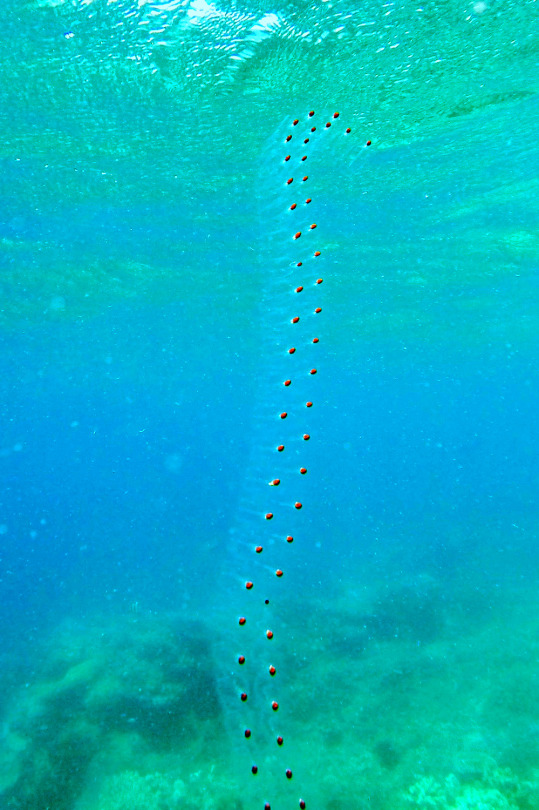#tunicata
Text
Salps!



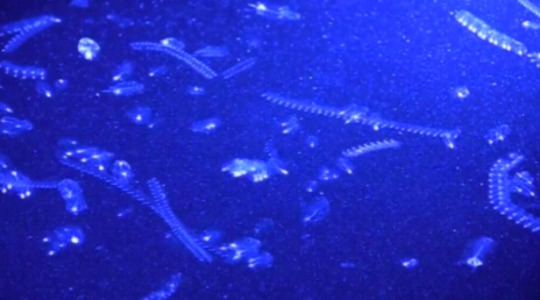
These jelly creatures are actually some of the closest relatives of vertebrates! Descended from sea squirts that became free-swimming again, all of the world's oceans have been invaded by these alien-looking organisms!
They have mastered their cloning ability to an incredible extent, with a single salp being able to reproduce and form chains of hundreds of individuals, floating in the middle of the ocean! Their life cycle is actually pretty unique, alternating solitary, sexually reproducting individuals with giant clone chains!
179 notes
·
View notes
Text

[Graveyards of Giant Pandas at the Bottom of the Sea? A Strange-Looking New Species of Colonial Ascidians in the Genus Clavelina (Tunicata: Ascidiacea)]
Hasegawa & Kajihara (2024)
228 notes
·
View notes
Text
Been super into pearls lately......shells.......bivalves........echinoderms....hydrozoa and bryozoa......................tunicata and porifera
31 notes
·
View notes
Text
Fish Taxonomy
The term fish is commonly used to refer to members of Actinopterygii (ray-finned fish, mostly what people think of when they imagine fish)and Chondrichthyes (cartilaginous fish, the sharks, rays, etc, and chimeras). It is also used for Sarcopterygii (lobe-finned fish, the coelacanths and lungfish) and Agnatha (jawless fish, the hagfish and lampreys), although people don’t talk about lobe-finned and jawless fish as much as they do ray-finned fish and sharks. Tetrapoda (four-limbed vertebrates) is nested within Sarcopterygii, and mostly contains animals which traditionally have not been considered fish (you, me, your cat, the chicken eating your popcorn, the frog hopping away from the chicken). In modern cladistics, this is a little bit of an issue, because the common use of fish as described above is paraphyletic, i.e. it does not include all of the descendants of the group’s last common ancestor. Here are some different ways this issue can be resolved.
Option 1: Fish is not a cladistic term, and therefore we don’t need to worry about whether it’s a good and well formed clade. Reasonable and understandable, we have loads of scientific terms to unambiguously talk about groups of animals, but also boring. Play with me in this space!
Option 2: Fish includes Osteichthyes (Actinopterygii plus Sarcopterygii), Chondrichthyes, and Agnatha, therefore it is essentially synonymous with Vertebrata. You, me, and Moby Dick are all joyfully fish (Melville was right!) (and also a fish). Is this really helpful? Maybe not, but it’s fun.
Option 3: Fish is not a cladistic term, it’s a non-scientific term used to refer to any animal that lives in the water. Jellyfish are fish, starfish are fish, dolphins are fish, humans are not fish, why would you ever suggest such a silly thing?
Option 4: Fish is essentially synonymous with Vertebrata, so why not expand that to all of Chordata? Tunicata and Cephalochordata are welcomed into the Fish Club.
Option 5: Fish is a lifestyle. In the same way that a tree is any plant that gets tall and kinda woody, a fish is an obligate aquatic animal that actively swims. Salmon are fish, tadpoles are fish, frogs are not fish, sea stars are not fish, porpoises are fish, octopuses (-pi, -podes) are fish, most gastropods are not fish, but Phylliroe is absolutely a fish.
Option 6: Fish comes from the Proto-Indo-European root *peysḱ- (“fish”), which is probably derived from *peyt- (“to feed, to guard, to nourish”), and is cognate to lots of words having to do with food (Sanskrit पितु (pitu, “food”), Lithuanian piẽtūs (“lunch”), etc), so if someone asks you “is this a fish?” you must slap it on the grill, maybe squeeze some lemon on it, and find out for yourself.
38 notes
·
View notes
Text
Part II of my spec project Batrachiterra, this is a lesser post simply containing the seeded species list.
These are the frogs seeded, note that D. auratus represents the genus Dendrobates who also includes two other species.

Seeded species
Many species were added in order to make the planet habitable for human and frog colonists such as:
Photosynthetic organisms
Pinus spp.
Passiflora spp.
Bromelia spp.
Bryophytes
Algae
Lichens
Grasses
Fungi
Polyporales
Tuber spp.
Agaricus spp.
Suillaceae
Amanitaceae
Animalia
Isopoda
Oniscideans
Cirolanidae
Centipedes
Scolopendromorpha
Geophilomorpha
Millipedes
Oniscomorpha
Platydesmida
Polyzoniida
Siphonophorida
Diptera
Culicidae
Asilidae
Sialis spp.
Solenopsis spp.
Xylocopa spp.
Gastropoda
Eupulmonata
Systellomatophora
Styllomatophora
Oligochaeta
Cnidaria
Cubozoa
Scyphozoa
Cirripedia
Tunicata
Nematoda
Bacteria
Zooplankton
#worldbuilding#art#illustration#digital art#spec bio#frog#frogblr#spec evo#speculative biology#speculative zoology#speculative evolution#batrachiterra
42 notes
·
View notes
Text
(not all inclusive bc there is an option limit but also tell me if your fave is missing, also would love to hear reasons why)
5 notes
·
View notes
Text




The British Tunicata; an unfinished monograph v.2
8 notes
·
View notes
Text
Salp spaceship!
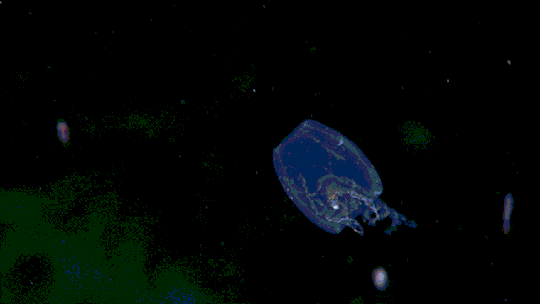
This little shrimp just hijacked a salp as its personal housing! Jumping inside salps or jellyfish for protection, hyperiid amphipods use their legs to propel the barrel-shaped jelly, becoming the propeller in this unique symbiotic sea vehicle! These interesting creatures even inspired the xenomorph queen in the movie Alien!
(source)
17 notes
·
View notes
Text
Tidepool time!

The leather chiton (Katharina tunicata), member of Ye Olde Snail Club.
0 notes
Text
Ecogenomics reveals distinctive viral-bacterial communities in the surface microlayer of a natural surface slick
Visible surface films, termed slicks, can extensively cover the sea surface, particularly in coastal regions. The sea-surface microlayer (SML), the upper 1-mm at the air-water interface in slicks (slick SML) harbors a distinctive bacterial community, but little is known about SML viruses. Using flow cytometry, metagenomics, and cultivation, we investigated viruses and the bacterial community from a brackish slick SML in comparison to non-slick SML as well as the seawater below (SSW). We conducted size-fractionated filtration of all samples to distinguish viral attachment to hosts and particles. The slick SML contained higher abundances of virus-like particles, prokaryotic cells, and dissolved organic carbon compared to non-slick SML and SSW. The community of 428 viral operational taxonomic units (vOTUs), 426 predicted as lytic, distinctly differed across all size fractions in the slick SML compared to non-slick SML and SSW. The distinctness was underlined by specific metabolic profiles of bacterial metagenome assembled genomes and isolates, which revealed prevalence of motility genes and diversity of CAZymes in the slick SML. Despite overall lower diversity, several vOTUs were enriched in slick SML over slick SSW. Nine vOTUs were only found in slick SML and six of them were targeted by slick SML-specific CRISPR spacers likely originating from Gammaproteobacteria. Moreover, isolation of three previously unknown lytic phages for Alishewanella sp. and Pseudoalteromonas tunicata, representing abundant and actively replicating slick SML bacteria, suggests that viral activity in slicks can contribute to biogeochemical cycling in coastal ecosystems http://dlvr.it/Sk05RM
0 notes
Text
A vitamin as well as Daucus carota main draw out minimize Caramboxin-induced person suffering from diabetes retinal damage within Wistar albino subjects through modulating neurotransmission along with downregulation involving apoptotic path ways
Optimum distinction enhancement occurred in between 10 along with A quarter-hour following compare broker treatment; hence, T2-weighted pictures might be attained inside the time period involving treatment as well as maximum enhancement for any more time-efficient medical standard protocol.The very construction regarding individual carbonic anhydrase 2 having a more than doubled the axis coming from that regarding the particular usually observed monoclinic device mobile or portable continues to be decided and refined to 1.Some angstrom quality. The actual diffraction data using l Is equal to 2n + 1 have been carefully sluggish than others along with h Equates to 2n. As a result, the actual climbing in the information, construction answer as well as accomplishment have been difficult. Both the substances comprising the asymmetric device refer by way of a noncrystallographic translation associated with 1/ together a new, only one with the compounds offers a pair of change opportunities linked by way of a turn around Two diplomas. This kind of revolving axis is located near the advantage of the core beta-sheet, causing a optimum long distance variation of 1.Several angstrom among equal atoms for the diametrically contrary side from the compound. The crystal-packing associates act like two successive blended product cellular material alongside a new of the formerly decided monoclinic system cellular. Abnormally substantial ultimate 3rd r(cryst) as well as Ur(no cost) valuations (Twenty.2% as well as 23.7%, correspondingly) are certainly not uncommon regarding constructions that contains pseudo-translational evenness and in all likelihood result from very poor transmission to be able to noise inside the vulnerable h-odd info.Your metazoan parasite wildlife and giving environment regarding A hundred sixty five Sprattus sprattus (D., 1758) had been examined #Link# from various regional parts (Baltic Seashore, Northern Sea, British Funnel, Fresh involving Biscay, Mediterranean Sea). When using Tough luck metazoan parasite species ended up determined such as six to eight Digenea, one Monogenea, 2 Cestoda, a couple of Nematoda and a couple Crustacea. Didymozoidae indet., Lecithocladium excisum and Bomolochidae indet. represent brand new sponsor records. The particular parasite varieties abundance differed in accordance with parts along with ranged in between 3 and 15. The most species-rich parasite wildlife was noted with regard to sprats from your These kinds of associated with Biscay (Northern Atlantic ocean), and the fish from the Baltic Sea comprised the lowest variety of parasite kinds. Much more tightly related geographical locations, the North Sea, British Funnel along with Bay of Biscay, demonstrated far more related parasite component areas weighed against much more distant areas. Through the reviewed bellies involving Azines. sprattus, when using 11 distinct food things have been discovered, which includes Mollusca, Annelida, Crustacea and also Tunicata. The very best variety of victim organisms belonged for the crustaceans. The variety of feed products in the particular abdomen had been resembled #Link# from the parasite community differences and parasite species prosperity #Link# from the different parts. The particular giving environment of the fish on the sampled spots was responsible for the particular witnessed parasite structure and, secondarily, the zoogeographical syndication in the organisms, asking yourself using the noted sprat parasitic organisms as natural indicators with regard to ecological conditions and alter.
0 notes
Text
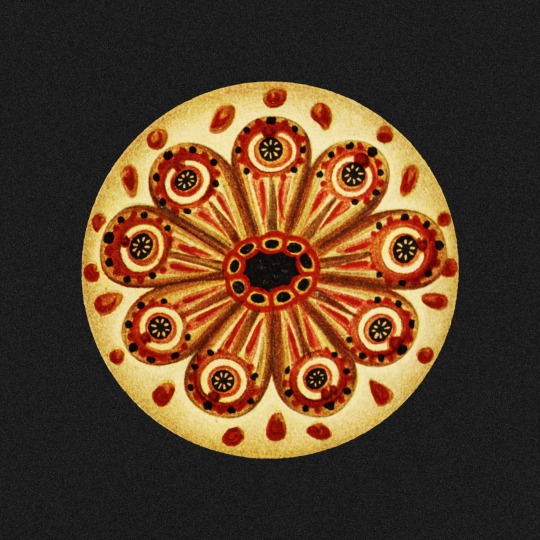
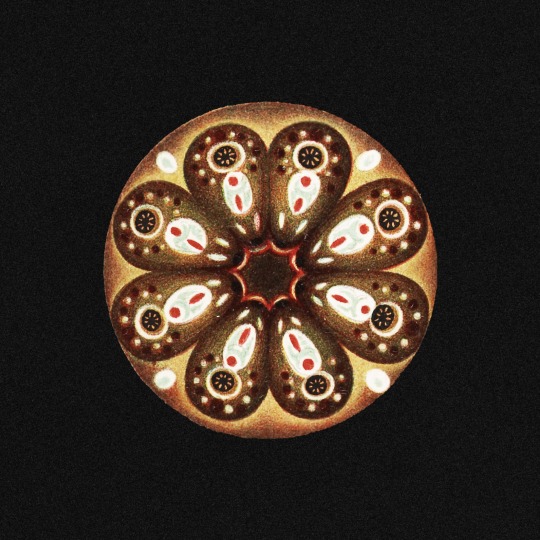


Ascidiae, Kunstformen der Natur (1904) - Ernst Haeckel
#Wonder Rooms#Cabinet of Curiosities#Public Domain#Natural History#20th Century#Ernst Haeckel#Kunstformen der Natur#Scientific Illustration#Animalia#Zoology#Marine Biology#Tunicata#Ascidiacea
97 notes
·
View notes
Text

Obese ascidian (Phallusia obesa)
Photo by davemmdave
#obese ascidian#ascidian#phallusia obesa#phallusia#ascidiidae#phlebobranchia#ascidiacea#tunicata#chordata
22 notes
·
View notes
